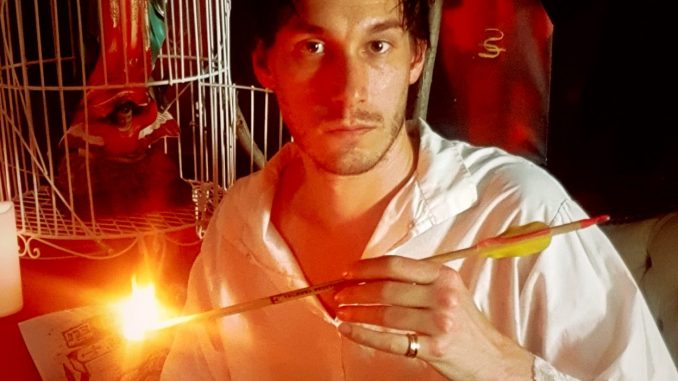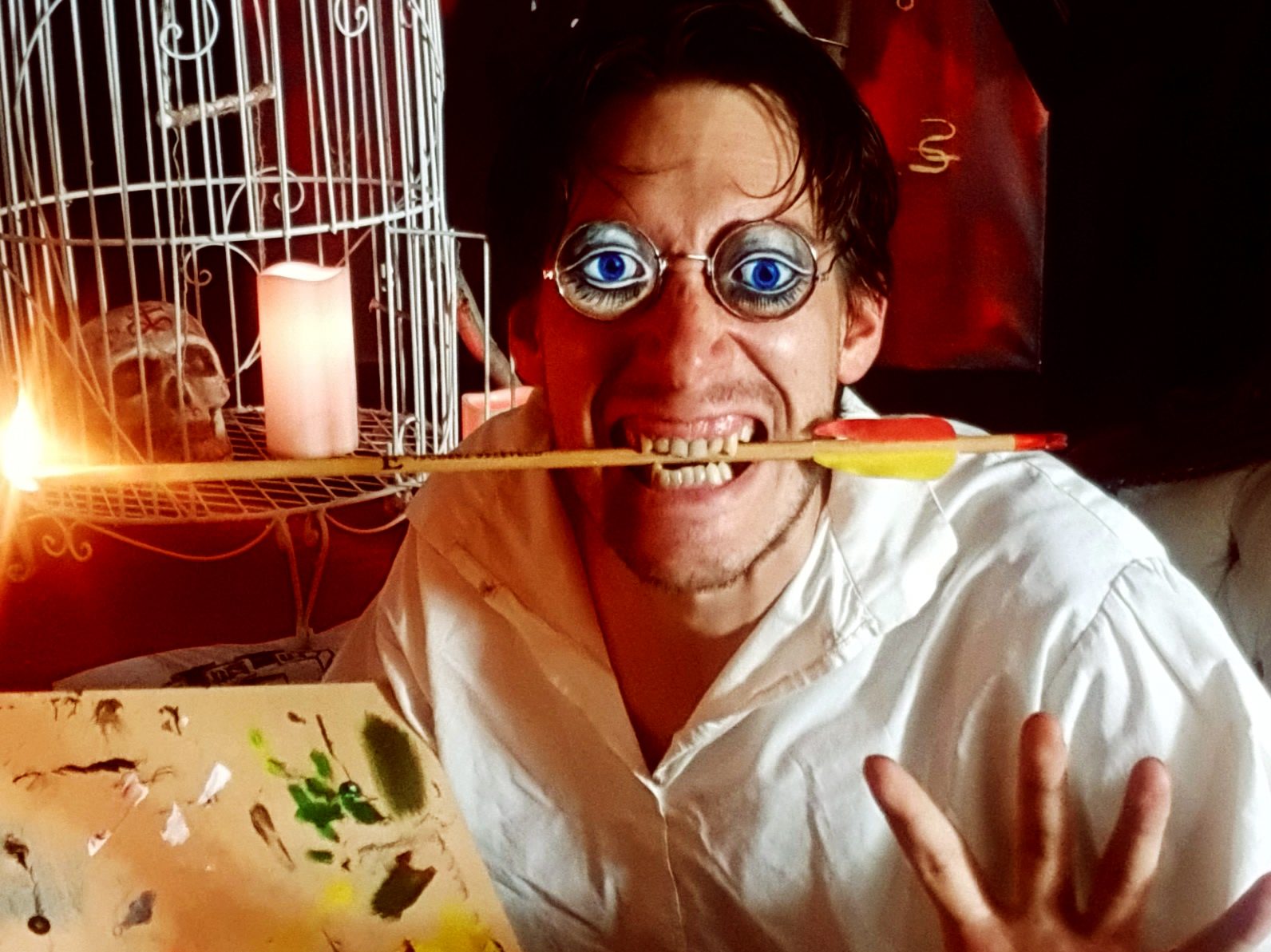
Kino-Poesia (lit. Cinema Poetry, Serbian).
- Kino-poetic film must focus on the poetry, not the performance.
Narrative filmmaking dictates that we apply a suspension of disbelief – we are
simultaneously aware that what we are watching is fiction and that the characters are not the
actors. Kino-poesia does not have that luxury. Once the poet is placed in front of the camera,
our focus becomes the performance or reading of the poem rather than the poem itself. This
is not Kino-poetic and, if included, must be justified artistically or have a greater meaning
within the whole to be considered Kino-poetic. A captured performance is simply a record of
events. This is not Kino-poetic. - Kino-poetic films do not depend on the camera.
The camera only captures what is in front of it unless the image is metaphorical or related to
the poetry; then, it is not necessary to be captured. Many films, newsreels, advertisements, cartoons and media have entered the public domain. Use them. Cut them up, and manipulate the imagery in the same way you manipulate words. Conjure up the ghosts of the dead and recast them as the symbolic archetypes your poem demands. - Reality only exists when it is in front of us.
The symbol is real when presented thus. A word is a symbol is a shadow cast by the original
object, thing, concept, emotion etc. The map is not the territory except when the map IS the
territory. Presenting words in Kino-poetic film draws our attention to the words and makes
the symbol real as an object, concept and doorway for the audience to look through. It is
undefined as something that has one inherent meaning. If I say door, it conjures up an
infinite number of doors in an infinite number of audience minds, complete with their own
histories, meanings, emotions, colours, smells, senses, and geographies. Sometimes the symbol is
all that is needed. - The act of reading is inherently different to the act of hearing and to the act of seeing. To project the text of a poem entire (or stanza, verse, word etc.) onto the Kino-poetic landscape (screen) opens the audience to be active with the work. Much like the tide, the work gives and takes,
ebbs and flows. - Unless there is a purpose, do not simply use the text as subtitle for the words being spoken.
- Do not present the punchline before the set-up. Give it to us slowly.
- Cinema is a temporal art form. It takes 24 frames to achieve a second. 60 seconds to achieve a minute. 60 minutes to achieve an hour. Use this to your advantage.
- Paint with cinema like Dali.
- Stylism is your enemy. Once you use elements of a particular style, your work carries with it the weight of what that style comes with.
- Stylism is your friend. Once you use elements of a particular style your work carries with it the weight of what that style comes with.
- Poetry, like all art, relies on objects (artefacts) to be present. A painting cannot exist without the space in which it takes. Music is the vibrational shadow cast by the light of notes being played, and it takes up temporal space. Poetry lies somewhere between these two states depending on what form it takes – if it is written, then it takes spacial form; if it is performed or spoken, the form then becomes temporal. The cinematic artefact also exists
simultaneously in these two forms. - The limitations of form are also their liberators.
- Any and all poetry has the potential to become Kino-poetic.
- Kino-poetry is defined by these rules. Otherwise, it is not Kino-poetry.
- Examples of Kino-poetry –
Haiku –
O! 5/7/5 –
3 images & 2 cuts.
A Kino-haiku.
(each image spans the length of syllabic feet in time)
Quincunx –
Five Words
In
This Shape
(static or revealing imagery, the words may fade for effect.)
Freeverse/Narrative
Focus on the emotional impact of imagery in conjunction with words &/ music not on the
performance of said words. - Juxtapose. Juxtapose. Juxtapose. Mirror.
- Experiment.
These rules were constructed during the making of the film 5 Fragments which can be viewed here.
Writer bio:

Sasha Cuha is a poet, film-maker, musician and actor currently residing in Melbourne. He is known for his live performance style which is a fusion of poetry and music. Sasha is inspired by narrative, occultism, cinema, and sound and in developing new forms, styles and expressions within poetry.
He is currently working on 2 spoken word albums and getting ready to perform his epic poem SVETOZA! at the Goldfields Gothic Festival.
Did you enjoy this article?
Sign up for my email newsletter to ensure you don’t miss a new article from The GW Review! Get my FREE 5-DAY email course on how to show, don’t tell in poetry, when you sign up today.
Want to submit to The GW Review?
The GW Review is an online literary journal seeking submissions of poetry, poetry book reviews, and music and poetry-themed feature articles. Send an email to the editor via contact@gemmawhite.com.au
Want to donate to The GW Review?
Your donations help pay the writers who submit their articles, book reviews, and poetry to this website.

Leave a Reply